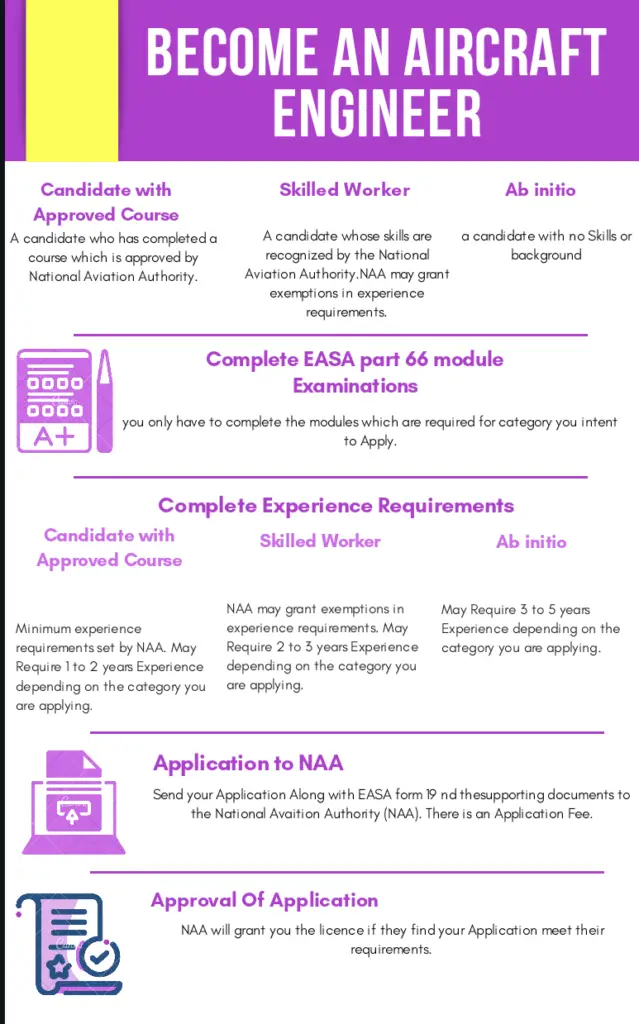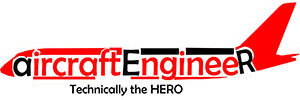EASA Part 66 is a regulation that sets the rules for licensing Aircraft Maintenance Engineers in Europe. It is governed by the European Union Aviation Safety Agency (EASA), which oversees aviation safety standards across Europe.
EASA Part 66 License Categories
EASA Part 66 licenses are divided into different categories based on the type of aircraft and maintenance work.
Category A – Certifying Mechanic
This license allows mechanics to certify basic maintenance tasks on aircraft. It is divided into:
- A1 – Turbine engine fixed-wing aircraft
- A2 – Piston engine fixed-wing aircraft
- A3 – Turbine engine helicopters
- A4 – Piston engine helicopters
Category B – Certifying Technician
Technicians with a Category B license can perform and certify more complex maintenance tasks. The subcategories include:
- B1.1 – Turbine engine fixed-wing aircraft
- B1.2 – Piston engine fixed-wing aircraft
- B1.3 – Turbine engine helicopters
- B1.4 – Piston engine helicopters
- B2 – Avionics (all aircraft types)
- B2L – Avionics (except certain large aircraft)
- B3 – Ultralight piston-powered aircraft (non-pressurized, under 2000kg MTOW)
Category L – Light Aircraft Maintenance
This category is for maintaining small aircraft and is divided into:
- L1C – Composite sailplanes
- L1 – Sailplanes
- L2C – Composite powered sailplanes & ELA1 aeroplanes
- L2 – Powered sailplanes & ELA1 aeroplanes
- L3H – Hot-air balloons
- L3G – Gas balloons
- L4H – Hot-air airships
- L4G – ELA2 gas airships
- L5 – Gas airships (other than ELA2)
Category C – Certifying Engineer
Category C license holders are responsible for certifying aircraft after major maintenance work in an aircraft maintenance organization.
EASA Part 66 Requirements
To get an EASA Part 66 license, applicants must meet specific requirements set by EASA. This includes proving both theoretical knowledge and practical experience to the relevant aviation authority.
Theoretical & Practical Knowledge
- Theoretical Knowledge – Applicants must pass the required EASA Part 66 module exams to demonstrate their understanding of aircraft maintenance.
- Practical Knowledge – Applicants must submit a logbook showing their work experience. The logbook must include:
- Detailed records of tasks performed
- Type of aircraft worked on
- Job card numbers for reference
Part 66 Knowledge Requirements
There are 18 modules in total under EASA Part 66, but not all are required for every license category. Each category has specific module requirements. Check the EASA Part 66 Modules section for details on which modules apply to each license category.
Part 66 modules
MODULE 1 – Mathematics.
MODULE 2 – Physics.
MODULE 3 – Electrical Fundamentals.
MODULE 4 – Electronic Fundamentals.
MODULE 5 – Digital techniques / Electronic instrument systems.
MODULE 6 – Material and Hardware.
MODULE 7 – Maintenance practices.
MODULE 8 – Basic aerodynamics.
MODULE 9 – Human Factors.
MODULE 10 – Aviation Legislation.
MODULE 11A- Turbine Aeroplane aerodynamics, structures and systems.
MODULE 11B- Piston Aeroplane aerodynamics, structures and systems.
MODULE 12 – Helicopter aerodynamics, structures and systems.
MODULE 13 – Aircraft aerodynamics, structures and systems.
MODULE 14 – Propulsion.
MODULE 15 – Gas Turbine Engines.
MODULE 16 – Piston Engines.
MODULE 17 – Propeller.

Part 66 Exam Format
The EASA Part 66 basic exams consist of:
- Multiple-Choice Questions (MCQ) – All modules have MCQs.
- Essay Questions – Only Module 7 includes both MCQs and essay-type questions.
- Computer-Based Testing – All MCQs are conducted on a computer.
EASA Part 66 Study Material
- Module books – Available online for download.
- AircraftEngineer.info – Offers study notes and resources for all modules.
EASA Part 66 Exam Locations
Exams are conducted by Part 147 approved organizations.
EASA Part 66 Exam Fees
The cost of the exam depends on the approved organization conducting it.
EASA Part 66 Experience Requirements
The experience required to get an EASA Part 66 license depends on your background.
Category A License
- Part 147 approved course – 1 year of experience.
- Military background – 2 years of experience.
- No formal training – 3 years of experience.
Category B License
- Part 147 approved course – 2 years of experience.
- Military background – 3 years of experience.
- No formal training – 5 years of experience.
Category C License
- Must have Category B1 or B2 license and 12 months of experience as Certifying Support Staff.
- OR have a technical university degree and experience in areas like hangar maintenance, planning, quality assurance, and spare parts management.
EASA Part 66 Logbooks
Logbooks are used to record practical experience. They are available at:
Part 145 maintenance organizations
Part 147 training organizations

Revocation, Suspension, or Limitation of EASA Part 66 Aircraft Maintenance License
The competent authority can suspend, limit, or revoke an EASA Part 66 aircraft maintenance license if a safety issue is identified or if there is clear evidence of misconduct, including:
- Falsification of documents to obtain a license or certification privileges.
- Failure to perform requested maintenance and not reporting it to the relevant authority.
- Negligent maintenance or failure to report safety-related maintenance issues.
- Falsification of maintenance records.
- Issuing a certificate of release to service without verifying the completed maintenance.
- Performing maintenance or issuing a certificate while under the influence of alcohol or drugs.
- Non-compliance with EASA Part 66 regulations when issuing a certificate of release to service.
EASA Part 66 Examination Centers
EASA Part 66 exams are conducted by approved Part 147 organizations worldwide.
AircraftEngineer.info is planning to hold EASA Part 66 exams soon. Stay updated for announcements!.
You can find exam centers online by searching on Google.
The privileges of EASA Part-66 aircraft maintenance license categories are as follows:
Category A
- Issue certificates of release to service for minor scheduled line maintenance and simple defect rectification1.
- Limited to tasks specifically endorsed on the certification authorization1.
- Restricted to work personally performed in the issuing maintenance organization1.
Category B1
- Issue certificates of release to service for maintenance on aircraft structure, power plant, mechanical and electrical systems1.
- Perform limited avionics tasks requiring simple tests3.
Category B2
- Issue certificates of release to service for maintenance on avionic and electrical systems3.
- Perform electrical and avionics tasks within powerplant and mechanical systems requiring simple tests3.
- Limited line maintenance and defect rectification within specifically endorsed tasks2.
Category B2L
- Issue certificates of release to service for maintenance on electrical and avionics systems within endorsed system ratings3.
- Perform electrical and avionics tasks within powerplant and mechanical systems when holding the ‘airframe system’ rating3.
Category B3
- Issue certificates of release to service for maintenance on piston-engine non-pressurized aeroplanes of 2,000 kg MTOM and below3.
- Perform maintenance on power plant, mechanical and electrical systems3.
- Conduct simple tests on avionics systems3.
Category L
- Issue certificates of release to service for maintenance on aircraft structure, power plant, mechanical and electrical systems3.
- Work on radio, Emergency Locator Transmitters (ELT), and transponder systems3.
- Perform simple tests on avionics systems3.
Category C
- Issue certificates of release to service following base maintenance of aircraft1.
- Privileges apply to the aircraft in its entirety
